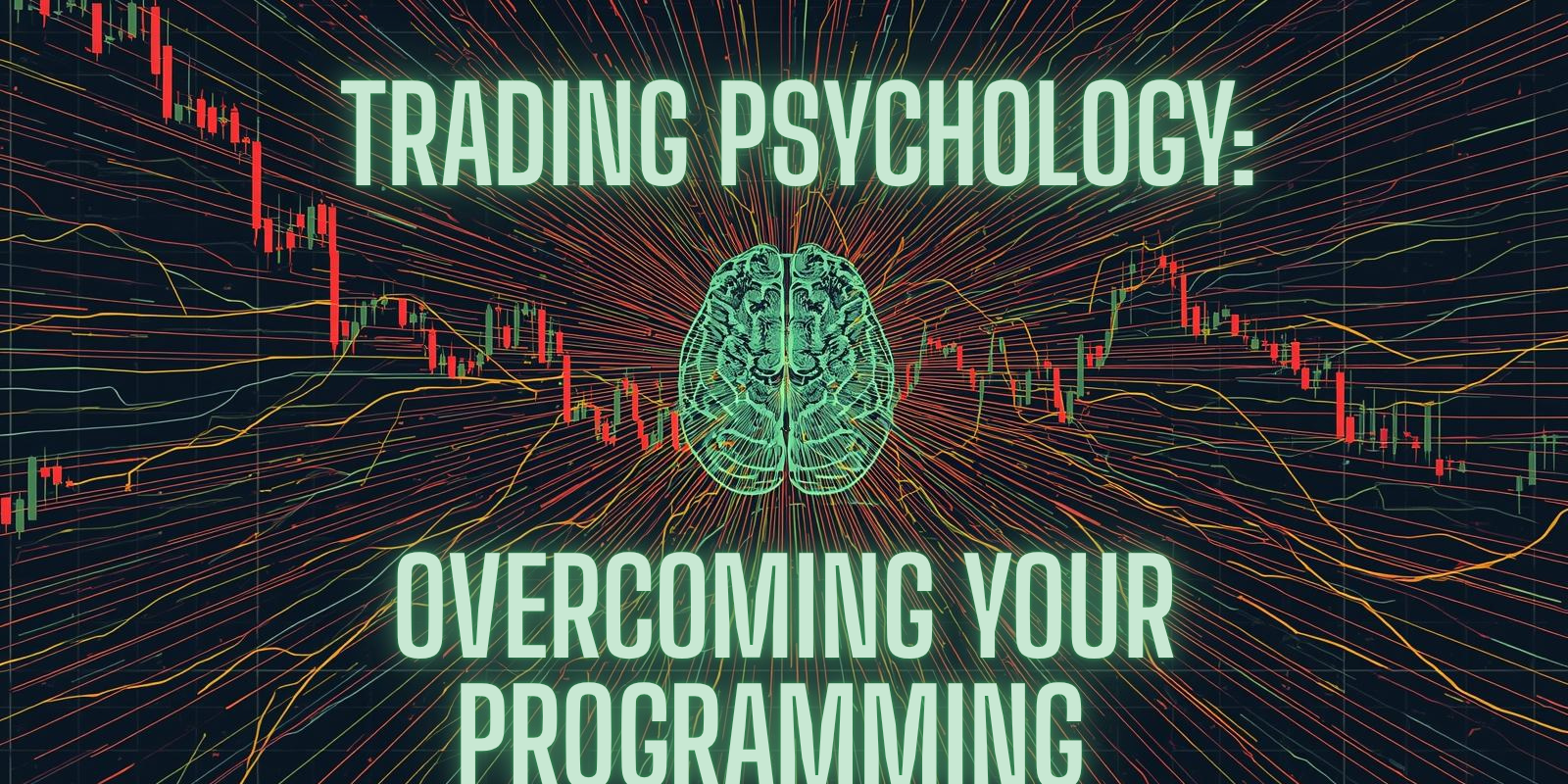Trading Psychology: Overcoming Your Programming
Trading Psychology: Overcoming your programming starts by acknowledging that your brain is the main hurdle. Your true challenge is overcoming your inherent programming—the deep-seated, evolutionary instincts that are perfect for physical survival but catastrophic for financial trading. Mastering your mental game is the ultimate trading edge.
So often, traders focus on learning how to trade, but very few consider the mental game; trading psychology. Trading is only ten to twenty percent of the game; the rest is your psychology. One of the first things you want to look at when you dive into this topic is your Programming. Trading Psychology: Overcoming Your Programming is one of the crucial first steps to look at.
The “Inherent Programming”: Where It Comes From
Your default mental settings—the ones that sabotage your trading—are ancient and were developed for survival in a dangerous, resource-scarce environment.
- Fear and Greed: These are the twin pillars of emotional trading.
- Fear is a primal defense mechanism that tells you to flee from danger (a losing trade or volatility). It causes you to panic-sell at the low or hesitate to enter a valid setup.
- Greed is the instinct to hoard resources when they are plentiful (a winning streak). It causes you to hold a winning trade far past your target, risking a full reversal, or to overleverage after a series of wins, assuming you can’t lose.
- Loss Aversion: This is the cognitive bias where the pain of a loss is felt twice as strongly as the pleasure of an equal gain. This programming makes you desperately cling to losing trades, hoping to just get back to break-even (avoiding the pain of a realized loss), while quickly taking small profits (locking in the small, temporary pleasure).
- Need for Certainty: Your brain loves predictability. The market is random and probabilistic. This conflict causes massive stress and is why traders struggle to adhere to a plan—they seek comfort in predicting the next move instead of accepting the risk of the current one.
This is your biological default setting. It helped your ancestors survive a lion attack; it will destroy your trading account.
⚔️ How This Programming Helps and Hurts
|
Aspect |
How the Programming Hurts You in Trading |
How a Refined Mindset Helps You in Trading |
|
Fear/Patience |
Causes you to miss high-probability entries or cut winning trades short. |
Allows you to wait patiently for your specific, defined setup and execute without hesitation. |
|
Greed/Risk |
Leads to over-leveraging, revenge trading, and holding trades past logical profit targets. |
Forces you to stick to your predetermined risk limits and exit at the planned target, protecting capital and gains. |
|
Loss Aversion |
Makes you hold losing trades indefinitely, turning small losses into massive ones. |
Enables you to accept small, mechanical losses as a necessary cost of doing business, preserving your capital for the next opportunity. |
|
Confirmation Bias |
Causes you to only look for news/analysis that supports your current trade (e.g., ignoring bearish signals because you’re long). |
Encourages objective analysis, forcing you to consider evidence against your position before and during a trade.
|
The Key: You Are The Human In This Equation
The answer is simple: The machine (your biological programming) is perfectly designed for survival, but flawed for trading. Only a conscious, rational entity—you—can override that programming.
This means your ultimate trading edge is not in a complicated indicator or a secret piece of software; it’s in your ability to be consistent and control your behavior when others are acting out their primal fears and urges.
Your edge is your:
- Conscious Choice: Recognizing the difference between a rational decision based on your written plan and an emotional impulse driven by fear or greed.
- Discipline: The voluntary, learned skill of executing your strategy flawlessly, even when it feels uncomfortable.
- Adaptability: The ability to learn from past errors (losses) without letting them trigger emotional reactions (revenge trading or hesitation).
️ How to Change Your Programming
You don’t eliminate your emotions; you retrain your response to them. This is a process of consciously building new habits that override the old, destructive instincts.
- Define Your Rules (The Code): Create a clear, quantifiable trading plan with specific entry, exit, and stop-loss criteria. If it’s not written down, it’s not a rule.
- Practice Mechanical Execution (The Muscle Memory): The goal is to make the trade execution so routine that it removes the moment of emotional decision. If your rule is “Exit at $10.00,” you execute at $10.00 without a second thought, regardless of how you feel about the trade.
- Journal Your Behavior (The Debugging Process): A trading journal must include more than just the trade result. Record your mental and emotional statebefore entering, during the trade, and after exiting.
- Example: “I felt fear before entry, which made me size down. I felt greed at the target, which made me hesitate to sell, but I followed my rule.”
- Risk Control (The Safety Net): Properly sizing your position so that even a full loss on a single trade does not cause significant emotional distress is the most powerful psychological tool you have. If you are terrified of a loss, you are risking too much.
By diligently executing a tested plan and consistently reviewing your behavior, you create a new, disciplined programming that allows you to act with logic instead of instinct.
Watch Our Trading Psychology Video on Programming here: https://youtu.be/VkODi7qCsas
Take the Trader Personality Test
Read:
Psychological Traits of Top Traders: 8 Key Traits You Need to Succeed
10 Essential Skills Every Profitable Trader Must Master
Top 12 Habits of Successful Traders
How to Get Started Trading Options
Discover How to Become a Professional Trader








